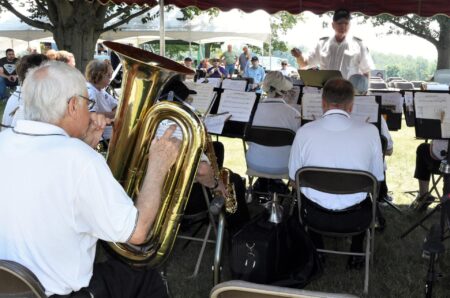HARRISBURG – Department of Conservation and Natural Resources Secretary Cindy Adams Dunn has announced that the department will be updating regulations applying to the conservation of native wild plants in Pennsylvania.
“Many people don’t realize that there are many more species of plants in the world than there are animals,” Dunn said. “Pennsylvania is home to about 3,000 plant species – about two-thirds of those are considered native to the commonwealth, and 349 of them are currently listed as rare, threatened, or endangered.”
As a part of its mission, DCNR and its Bureau of Forestry protects and manages native wild flora resources by determining status, classifying, and conserving native wild plants. Pennsylvania’s wild plant classifications includes rare, threatened and endangered, as well as others such as vulnerable, extirpated, tentatively undetermined and special population.
The proposed updates to the list of classified plants include:
- 30 plants being removed from the list
- 24 plants being added to the list
- 22 plants moving from a lower classification to a higher one
- 6 plants moving from a higher classification to a lower one
Each plant proposed for classification changes are thoroughly described in Native Wild Plant Species Accounts, including number of populations, trends, taxonomy and threats to the species. The species accounts are available on DCNR Bureau of Forestry’s website.
The proposed updates to the list of classified plants are a result of changes in the populations of these plants. Some plants have been found to be more common the Pennsylvania and are proposed to be removed from the list because they are not in need of conservation, while other have declined and are proposed to be classified.
Many factors can threaten populations of plants and cause them to become rare. Some of the most common threats to plants in Pennsylvania include:
- Habitat loss and fragmentation, due to development or conversion of habitat
- Invasive plants displacing native plants
- Creation of more edge habitat, increasing the threat of invasive plant species
- Selective browsing by white-tailed deer or other wildlife may prevent plants from reproducing
- Over collection by people
There are some things everyone can do to help native wild plants:
- Don’t pick native wild plants. Picking flowers means the plant will not go to seed. Take pictures, but leave the flowers in their habitats.
- Do not remove plants from the wild to plant at home. They generally will not survive and removing them hurts their natural populations.
- Avoid spreading invasive plants and remove them at home.
- Plant native species in your yard, and ask for them at the garden center.
Many changes in Pennsylvania’s landscape and plant taxonomy have occurred and DCNR continues to work through more than 20 years of field and taxonomic data to update plant classifications.
The Wild Resource Conservation Act of 1982 gave the Department of Environmental Resources (predecessor of DCNR and the Department of Environmental Protection) the authority to classify native rare plants. This rulemaking package is the second in a series of rulemakings to bring DCNR’s regulations in line with current available science.
The proposed rulemaking was printed in the PA Bulletin on August 27. There is a 30-day public comment period on the regulations. Comments can be submitted to [email protected].
DCNR will address comments from the public, the Independent Regulatory Review Commission (IRRC) and the House and Senate Committees on Environmental Resources and Energy. After addressing all comments, the department will resubmit the rulemaking for review by IRRC and the legislative committees. Following a public meeting, the Legislative Reference Bureau will publish the rulemaking as final in the PA Bulletin.
The department receives plant data, information, and classification recommendations from the Pennsylvania Biological Survey’s (PABS) Vascular Plant Technical Committee, which is comprised of professional botanists. DCNR also receives input from a public forum of the committee — the Rare Plant Forum; which is attended by 50-80 amateur and professional botanists from across the state.
For more information about the rulemaking and wild plants, visit the DCNR website at www.dcnr.pa.gov, choose the “Conservation” tab, then “Wild Plants” and select the “Rare, Threatened and Endangered Plants” link on the right column.






















